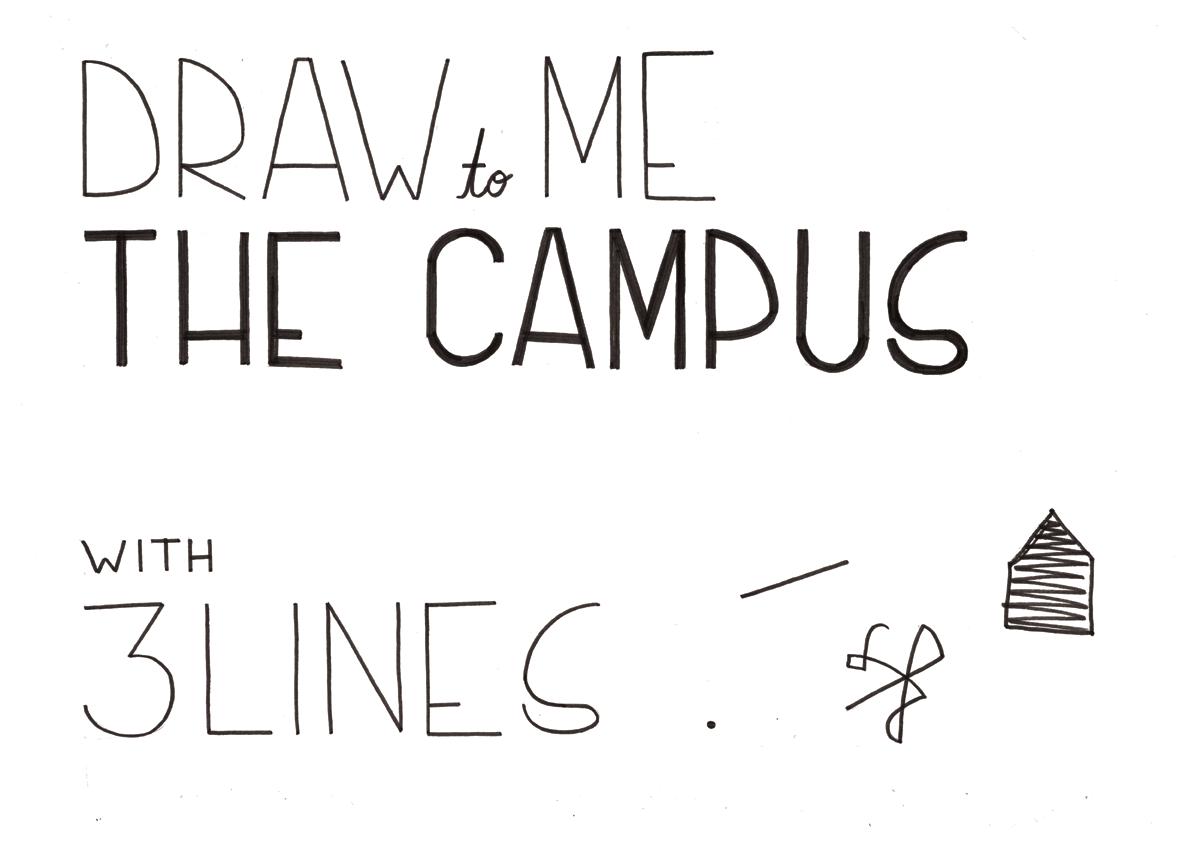

WHAT ABOUT LINES
Brokn.
What about Lines ?
Lines are fundamental elements within the field of architecture. As future architects, we dealt and engaged with it in various different ways throughout our studies.
However, often used from the perspective of a tool, or as a pragmatic geometrical element, Lines usually have for us a very limited definition, as just a part of something “wider”, ending up narrowing the possibilities of this component.
Thus, the following essay will try to grasps a diverse range of definitions of Lines in the art world, trying to answer : What could be a Line ?
Not meant as an exhaustive compilation of definitions, the objective is to give an understanding of its possible roles and functions, when Lines are imagined not only as part of a whole, nor exclusively as tools of a larger piece, but as the objects, the main protagonists.
The research will focus on attempts to define the concept of Line, going through works where the Line is conceived as a conscious act : not because its shape is already known before appearing, but with the idea that it has been made for/with a reason and meant as some kind of individual entity, being the response to/at a specific mechanism.
Brokn.
Bibliography 4 10 16 21
Lines as mo v e m e n t
Lines as f e e li n gs & e m o t io n s
Lines as r e s p o n s e s t o t h e m s e l v e s
Khosravi Al Hosseini Hamed
In his 1926 book «Point and line to plane», Wassily Kandinsky is exploring the role of elementary shapes in painting, particularly points and Line that are in his definition closely related : Lines are the traces left by the movement of a point, expressing a dynamic energy conveying emotions or sensations due to directions, thicknesses, intensities and length.
A similar conception of Lines is emitted 38 years later by Paul Klee in his «Modern art’s theory». Again Lines are born from the act of moving a point in space, becoming then a form-generating force.
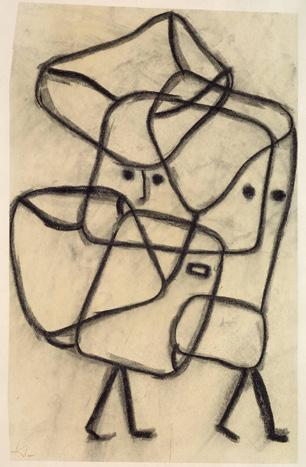
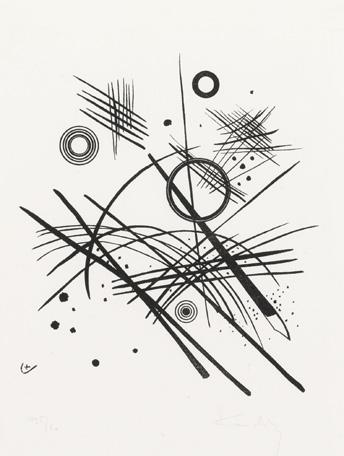
Khosravi Al Hosseini Hamed 2024
Paul KLEE, Burdened children, 1930
Wassily KANDINSKY, Schwarze Linien, 1924
In both cases, even if Lines are bounded to the idea of movement, it is only conceived from the perspective of a hand motion, although the full body could contribute to this form-generating force, as in the work of the American artist Heather Hansen.
She is creating lines as the transcription of her body language, carefully brought within a choreography.
In her work, Lines and movement cannot be separated from one another, and is more than a conceptual or theoretical approach as seen before : it is the essence of the art itself.
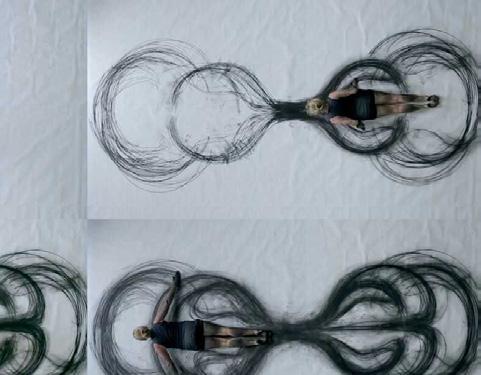
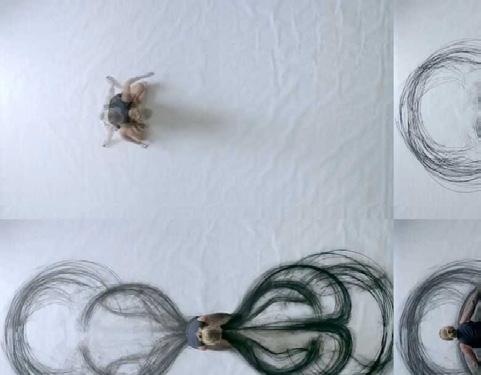
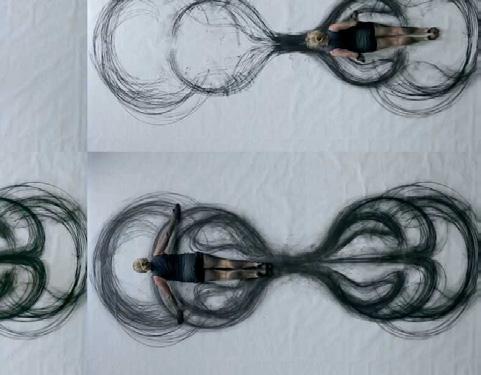
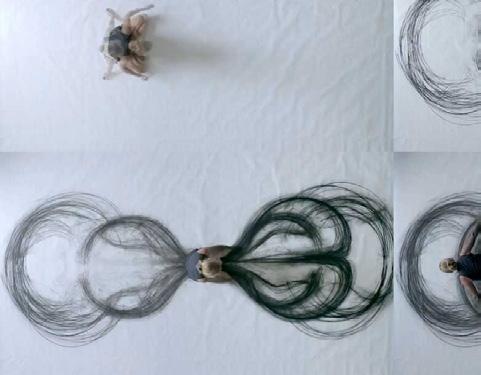
Khosravi Al Hosseini Hamed
Moreover, Lines could not only be defined as the result of some movement, but as the movement itself in time. In many of his work about the act a walking into a straight line, Richard Long is working with the double temporality of the act of creating “a piece of art”.
The movement of the body and the time it takes is not only part but the art, and the duration of the visibility of the path is questioning the impermanence and durability of art, as well as human presence in nature. Indeed, R.Long is tracing/sculpting Lines using his body and steps, sometimes placing stones, but the Lines created are often disappearing very fast.
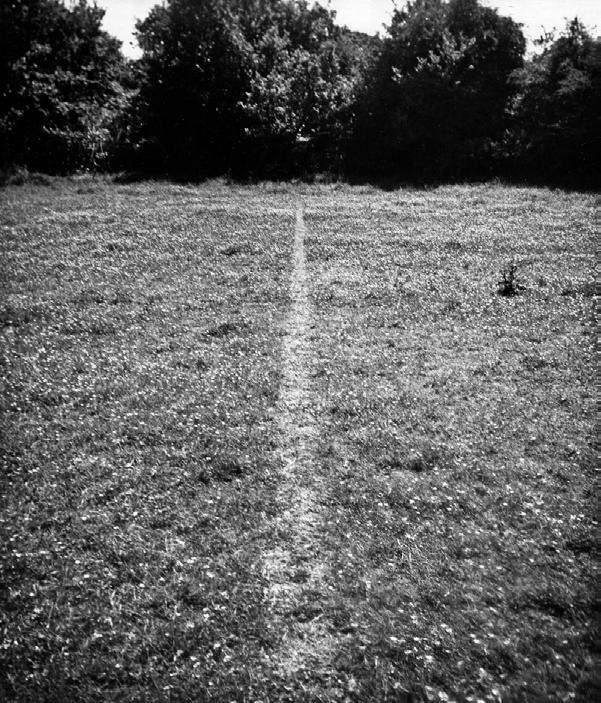
Khosravi Al Hosseini Hamed
Richard LONG, a line made by walking, 1967
More than just drawn components resulting in a “piece” that would represent feelings, each Lines could be the path to freed inner neurosis. Lines are individually becoming some kind of “exutoire”, and the expression of indescribable feelings not only being represented, but embodied.
The work of Roberta Boffo, an Italian artist born in 1986, reflects this use of Lines. In her latest work, she always starts with the biggest, widest Lines drawn with a brush, that would generate some spaces on the paper, and then continues, gradually drawing smaller lines and ending up drawing millimetric thick Lines becoming grayscale on the canvas.
The process of doing is becoming a journey to inner peace, where each Line is becoming some kind of “word”.
This non-verbal expression involved in R.Boffo’s work shows the power of Lines, as it can be more than just the representation of an emotion, but also a deeper transcription of it.
Zoom over the «grayscale» drawn on the canvas
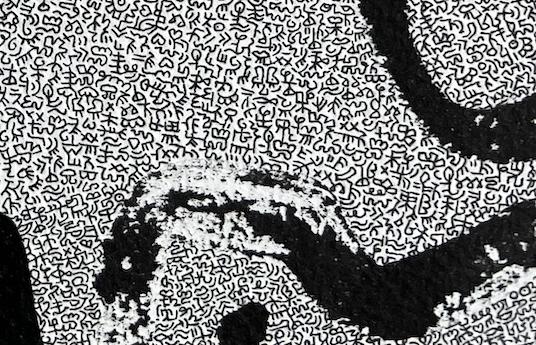
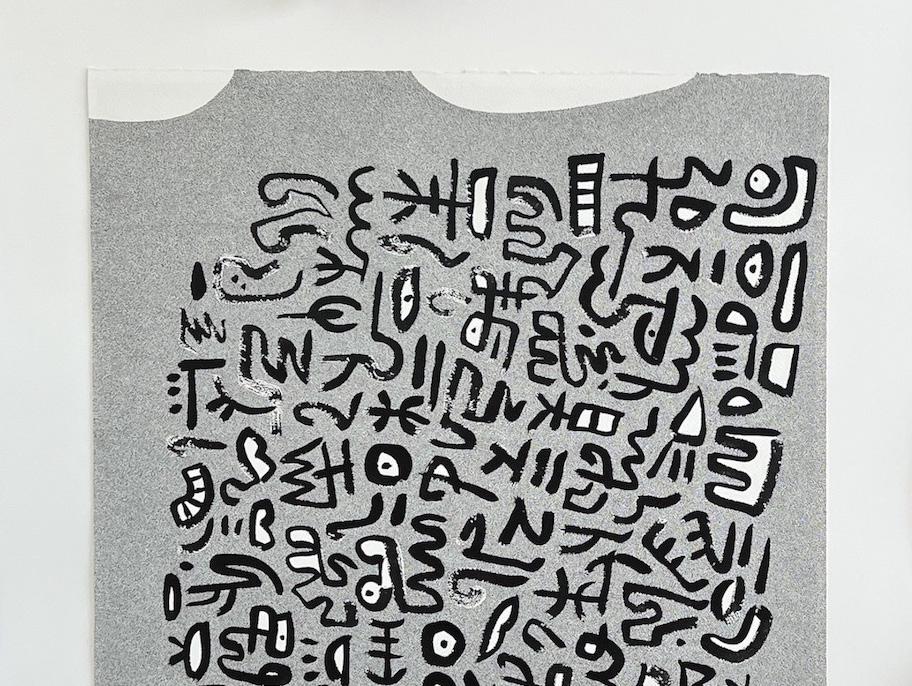
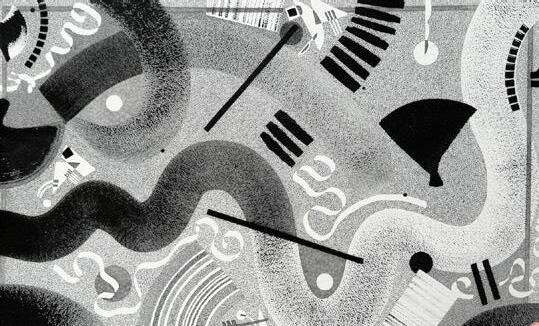
What about Lines ?
Khosravi Al Hosseini Hamed
Roberta BOFFO, Silently, 90 * 136 cm
Roberta BOFFO, Valzer Tra Sogno & Realtà, 97.5 * 77.5 cm
The same kind of involvement of Lines is found within drawings I am sometimes doing : Expérimentations musicales (Musical experiments) In the case of those drawings, Lines are the translation of the sensation provided by music. The process of doing is becoming the instant expression of an intuitive movement, and it is controlled by the musics values : its tone, rhythm, pitch …
Lines then have the ability of not only keeping a trace, but also to “record” emotions. Kim Beom is also giving an example of this approach in his Yellow Scream (2012) As he explains : “The effect of the screams are recorded with the brush strokes […] screaming greatly affects the lines that are drawn. You may find it hard to think about something or make decisions from a painting but don’t think, just choose your colors and move your brush as you feel [the scream]”
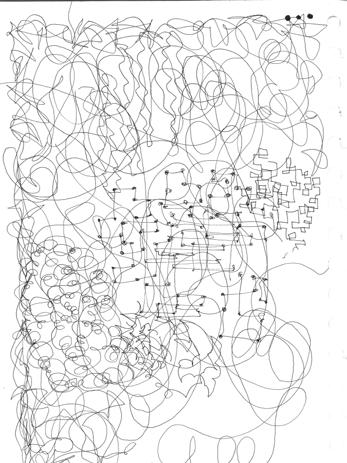
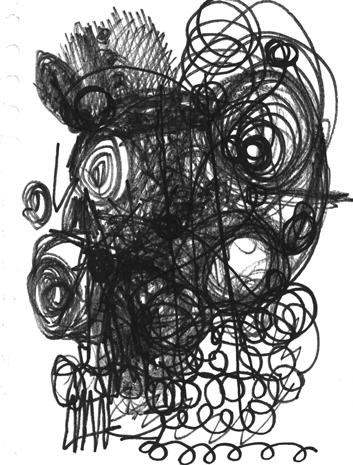
Brokn, Expérimentations musicales
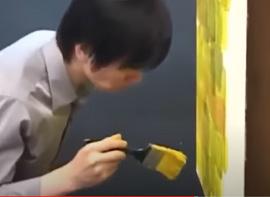
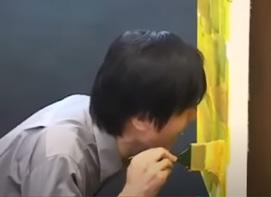
* Long and strong scream *
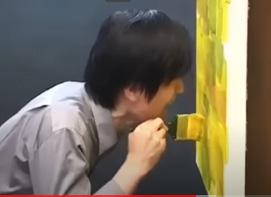
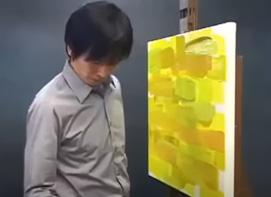
Kim BEOM, Yellow scream, 2012
The artist in the process of «painting to encapture his screams»
Khosravi Al Hosseini Hamed
* Long and strong scream * * Silence * * Silence *
Lines as
In the two first parts of this essay, we started from the idea that Lines had some kind of purpose, but what if there is no meaning ? What If the reason of existence for a Line would just be its presence somewhere, resulting of a spontaneous event ?
Without any definition, Lines could be anything. It has then two main possible consequences :
- Lines could be disconnected from one another, and having as only expression their singular shapes.
- Lines could be “answering” each other, creating combined shapes forming the abstract or figurative representation of objects and ideas.
In his painting “Tête de Faune”, Picasso is actually working from this perspective : Starting from 3 round Lines, he is moving forwards, with each new Line becoming a new interpretation of all the previous one drawn. In this case, Lines are not predicted, but more like instant visions of possibles narratives.
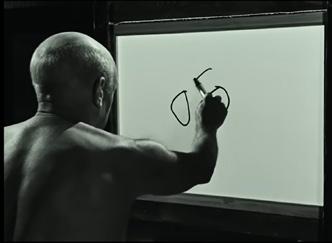
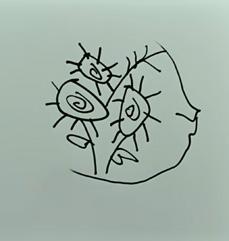
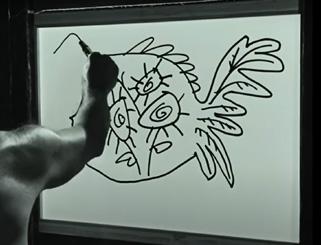
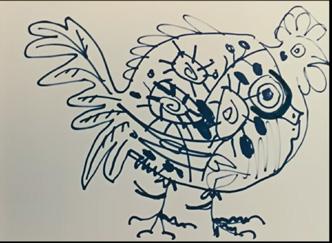
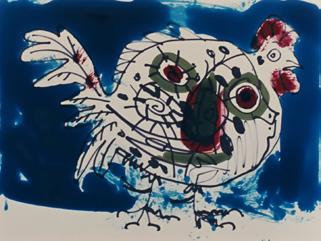
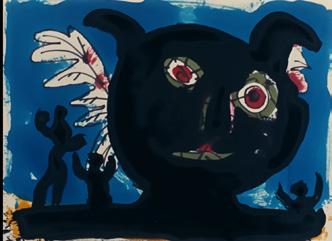
Captured by Henri-Georges Clouzo
Duration of the whole process : 5 min
Khosravi Al Hosseini Hamed
Starting point
A flower bouquet
A chicken
A fish
A face within a coq
Ending point
Pablo PICASSO, Tête de Faune, 1960
Furthermore, the game called “Le jeu des trois traits” (Three Lines game) is based on this attitude of free Line drawing as well, but offering it to anyone, even people uninitiated in drawing.
This game, played by at least two people, involves each player drawing three Lines on the same sheet, turn by turn. A Line can take any desired shape, and is defined by the moment the pen touches the paper. Thus, a Line can be a point, a straight Line, a curve, a scribble, a shape, and so on. During each turn, the player with the pen of their choice can draw the Line they wish, responding or not to the ones previously drawn by others. The drawing is built around a single rule: Everything is possible; there are no bad Lines.
From this idea, Lines actually have a very close definition to Surrealism, as André Breton defined it in his 1924 «Manifest about Surrealism» :
“Surrealism is the ability of thinking, freed from the constraint of reason […] Outside of any aesthetic principle”
( Le Surréalisme est un accès à la pensée débarrassée des contraintes de la raison […] En dehors de tout principe estéthique )
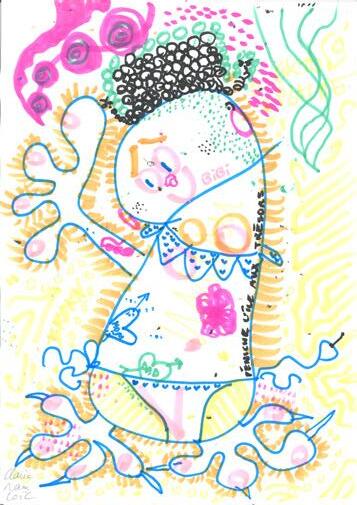
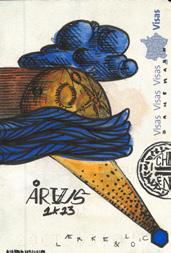
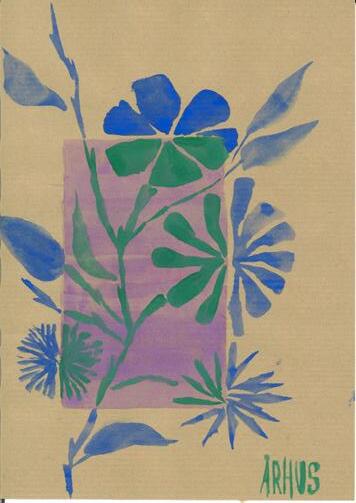

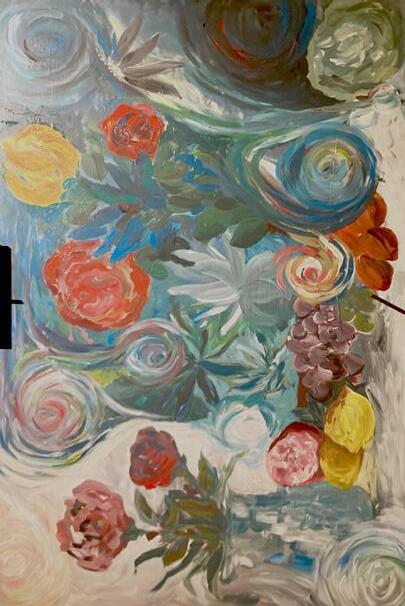
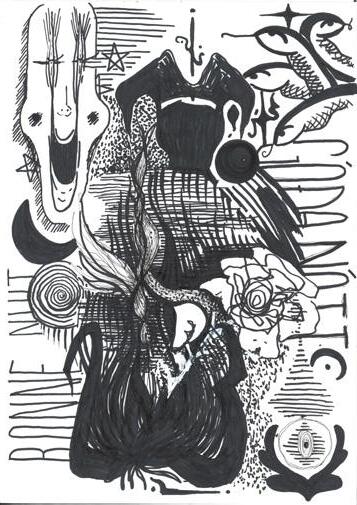
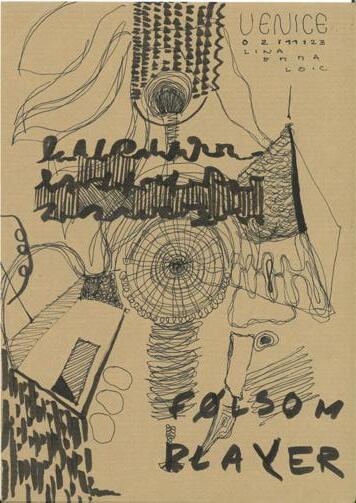
What about Lines ?
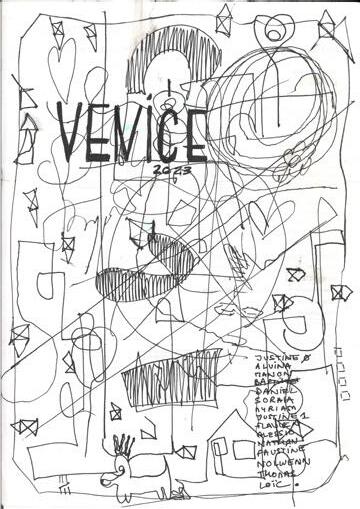
Khosravi Al Hosseini Hamed
Brokn.
Conclusion
From this travel through the imagination of Lines, the infinite possibilities of such a powerful component are highlighted.
By tracing letter it can be used to write, forming a manuscript translation of a data.
Drawn on a surface, Lines can serve to represent objects and shapes, as shareable information, or allowing to express oneself, transcribing thought, emotions and ideas. As a physical or metaphorical “object”, its meaning could go from a limit to some movements ...
Lines could be then seen as the protagonists, and even if not conceived as such, Lines are often the first tools used to go from an idea or a thought to its physical expression, what would maybe make it one of the most fundamental element,
not only in art, nor in architecture, but in most disciplines we know.
Khosravi Al Hosseini Hamed
Brokn.
Bibliography
T. Ingold, «Lines : a brief history» (Routledge, 2007)
W. Kandinsky, «Point ligne plan. Pour une grammaire des formes» (Denoël & Gonthier, 1970, French translation by Philippe Sers)
P. Klee, «Théorie de l’art moderne» (Gallimard, 1998, Col. Folio essais, translated from german by Pierre-Henri Gonthier)
S. DEVISSCHER (2021). Les oeuvres du corps de Heather Hansen. www.familyjoe.fr/les-oeuvres-du-corps-de-heather-hansen/
Ved (2014). Exposition : C’est de l’art sur le web : Heather Hansen, la danse du fusain www.rtbf.be/article/c-est-de-l-art-sur-le-web-heather-hansen-ladanse-du-fusain-8185732
K. Hosmer (2017). Artist’s Physical Gestures Produce Beautiful Charcoal Drawings. mymodernmet.com/heather-hansen-the-value-of-a-line/
Artificial Official (2019). Heather Hansen « Emptied Gestures » : The Beauty of Kinetic Art. artificialofficial.com/heather-hansen-emptied-gestures/ www.richardlong.org/
www.robertaboffo.com/ www.youtube.com/@robertaboffoart
CPrice (2019). Kim Beom - Yellow Scream [Video]. www.youtube.com/watch?v=xesGkxslveo
Royal Academy of Arts (2020). Watch Picasso Make a Masterpiece [Video]. www.youtube.com/watch?v=Nxes8pyHkJc
